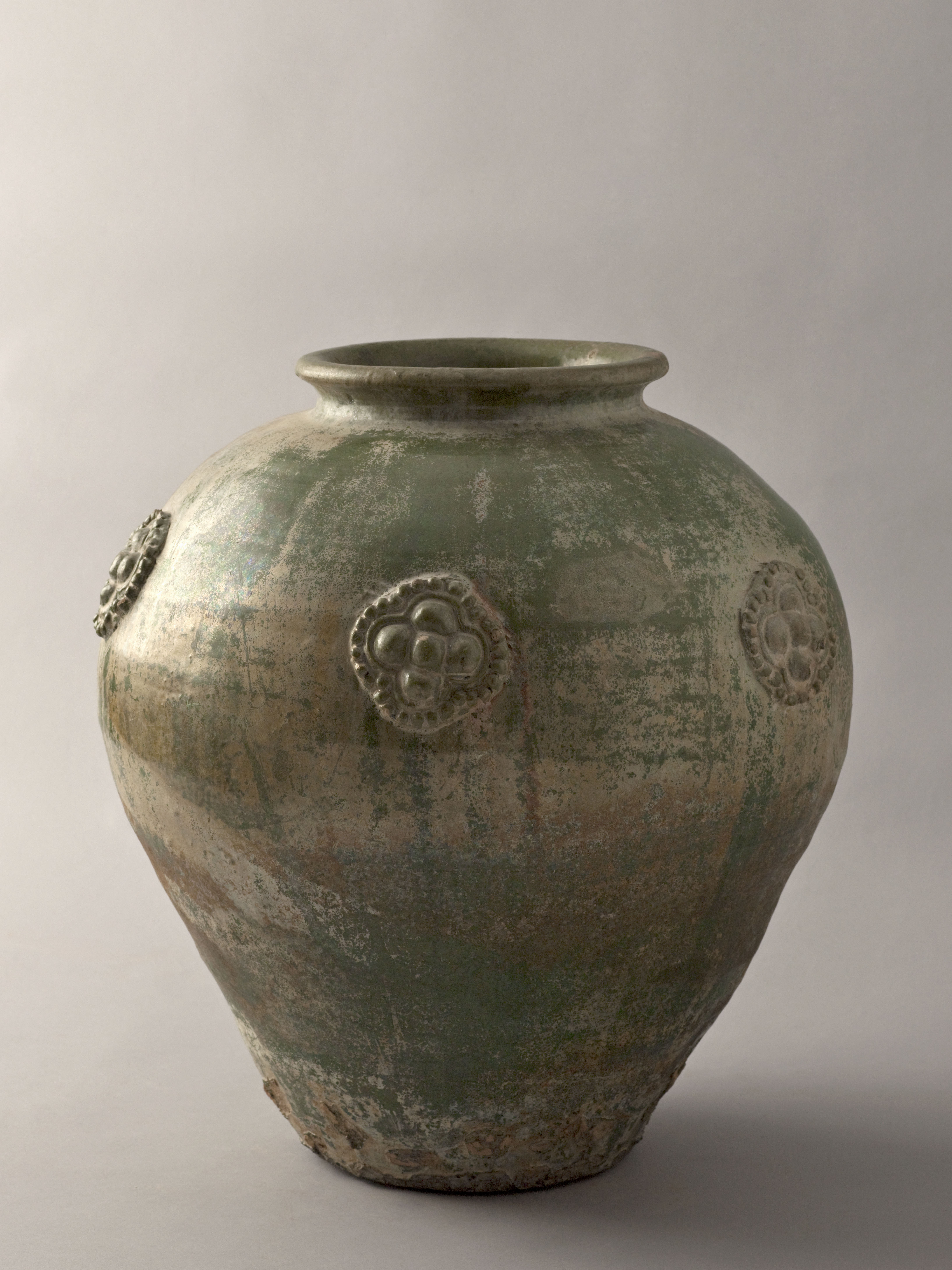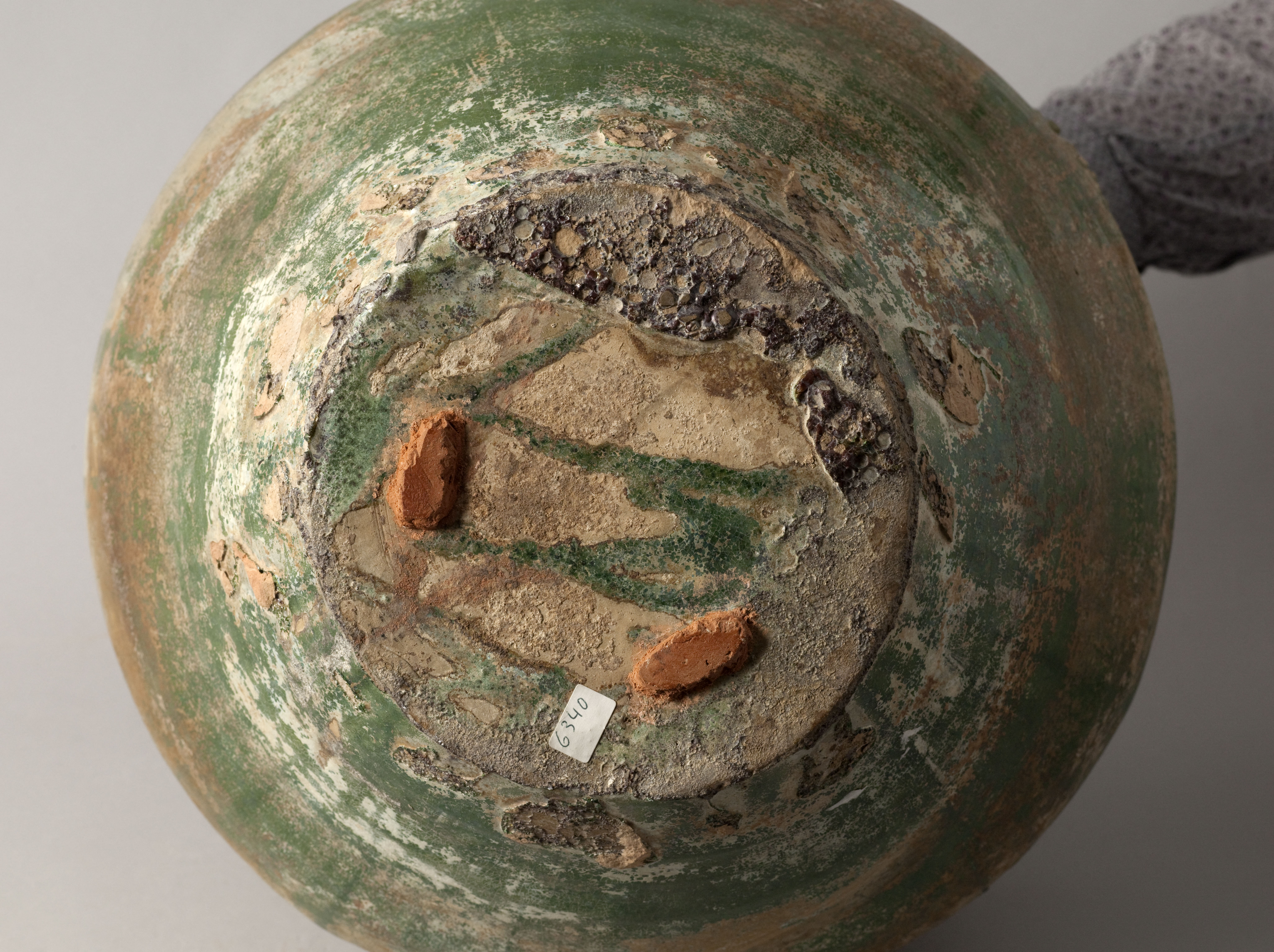
Jarre
Céramique tournée, Terre cuite, Glaçure = Couverte, Décor rapporté (céramique)
Récipient ou contenant, Jarre
Don manuel : Fondation Antoni Laurent; Société des Amis du musée Cernuschi
M.C. 9916
This impressive vase with fine green glazing turned iridescent from its long burial in the earth is a spectacular addition to the Cernuschi Museum’s Chinese ceramics collection.
The polylobate beaded medallions adorning the body liken it to a group of vases and candlesticks usually thought to be inspired by Sassanian metalwork. The oldest among them were discovered in Hebei province, in the tomb of one Zushi of the Feng family, laid in the tomb circa 531. Similar vases have been unearthed at Wuhan in Hubei, Shou-yao in Anhui, Zibo Yao in Shandong and Anyangyao in Henan. But according to Prof. Kamei, these Western-style motifs first appeared in northern China.
Several Western collections include pieces that are very similar to this vase, such as those in the Royal Ontario Museum, the Freer Gallery of Art in Washington and the Museum of Fine Arts, Boston.
Kamei Meitoku , "The Study on the Celadons Decorated with Applied Ornaments in Southern -Northern Dynasties", Tōyō Tōji, 1998-1999, vol. 28, p.100. fig.27
Sato Masahiko - Hasebe Gakuji, Ceramic Art of the World, vol. II, Tōkyō, Shogakukan, 1976, p.193, fig.168
Mino Yutaka, Pre-Song Dynasty Chinese Stonewares in the Royal Ontario Museum, Toronto, The Royal Ontario Museum, 1974,
Jean Fontein - Wu Tung, Unearthing China's Past, Boston, The Museum of Fine Arts, 1973, fiG 43
Art chinois, Musée Cernuschi, acquisitions 1993-2004, Paris Musées/Editions Findakly, 2005, p. 88-89
